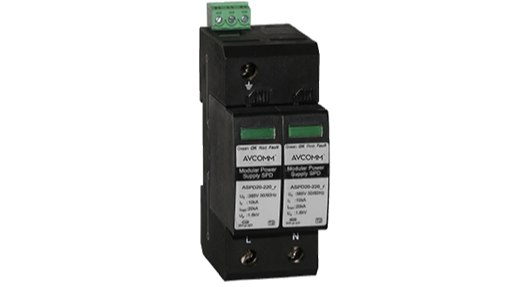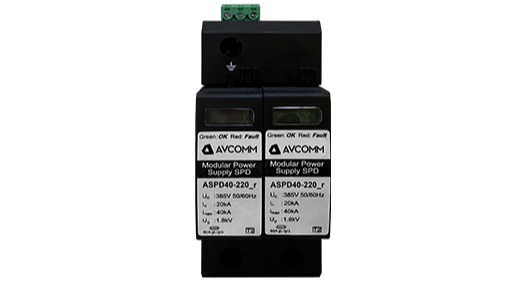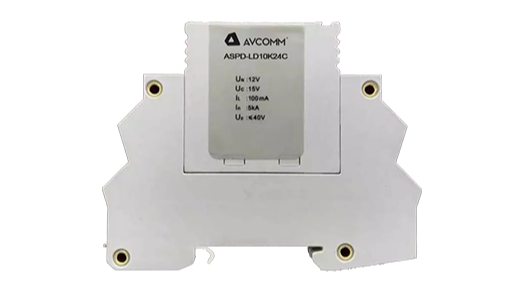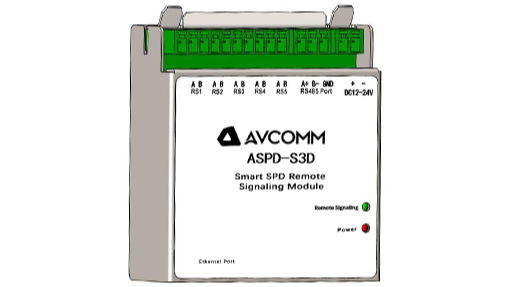Problem :
How will the Remote Signaling Surge Protectors address the surge protection and lightning issues for outdoor low-voltage systems at the airport?
Online Monitoring:
Online monitoring stands as a pivotal feature of the SPD's remote signaling function. It enables real-time surveillance of surge protection and lightning prevention devices for outdoor low-voltage equipment at airports, promptly detecting any anomalies. Through connections to sensors and control systems integrated into outdoor low-voltage equipment at airports, the SPD's remote signaling function can continuously monitor the operational status of surge protection and lightning prevention devices. Upon identifying irregularities such as SPD failure or malfunction in lightning prevention systems, the system immediately emits an alert signal, notifying airport personnel for timely intervention, thus preventing further damage to the equipment.
Remote Management:
Remote management stands out as one of the advantages of the SPD's remote signaling function, enabling airport personnel to oversee the surge protection and lightning prevention devices for outdoor low-voltage equipment remotely. In civil aviation airports, managing equipment poses a significant challenge due to its widespread distribution. The SPD's remote signaling function, through remote management, empowers airport personnel to remotely administer the surge protection and lightning prevention devices for outdoor low-voltage equipment. This not only saves manpower and resources but also enhances management efficiency and quality. Additionally, through the remote management system, personnel can promptly acquire equipment status information and alarm signals, enabling them to take prompt corresponding measures..
Timely Alarm:
Timely alarm is also a critical feature of the SPD's remote signaling function. It enables the prompt detection and alerting of abnormal conditions in surge protection and lightning prevention devices. In civil aviation airports, the smooth operation of equipment is absolutely vital for the airport's safe functioning. Swiftly identifying and addressing equipment faults or irregularities is of utmost importance. The SPD's remote signaling function, with its real-time monitoring and prompt alert mechanism, rapidly identifies abnormalities in surge protection and lightning prevention systems, issuing timely warning signals to notify airport personnel for necessary action. This aids in reducing equipment damage and malfunctions, thereby lowering the potential for unexpected accidents.
Low Cost:
The SPD's remote signaling function employs advanced sensors and communication systems, offering a cost-effective solution to reduce both management and maintenance expenses. Traditionally, ensuring the proper functioning of surge protection and lightning prevention devices in outdoor weak current boxes at airports required a significant investment of manpower and resources for regular inspections and maintenance. However, this approach not only consumed substantial resources but also often failed to promptly identify and address issues. In contrast, the SPD's remote signaling function enables real-time monitoring of the operational status of surge protection and lightning prevention devices, promptly detecting problems and issuing alarms. This function not only minimizes the input of manpower and resources but also decreases management and maintenance costs.
High Efficiency:
The SPD's remote signaling function enables real-time monitoring and remote control, facilitating prompt responses and alerts for repairing faulty or damaged equipment to restore its normal operational status. In traditional management methods, when the surge protection and lightning protection devices of equipment malfunction or get damaged, it often necessitates on-site inspection and repair by personnel. This not only consumes time but may also disrupt the normal operations of an airport. However, through the SPD's remote signaling function, personnel can remotely identify faults or damaged equipment in a timely manner and promptly take corresponding repair measures, thus mitigating the impact of equipment malfunctions on airport operations.
Solution:
Related Products:

ASPD20-220_r(Power Surge Protector)
· Maximum Continuous Operating Voltage
(Uc): 385V
· Rated Discharge Current (8/20µs) (In):10kA
· Maximum Discharge Current (8/20µs)
(Imax):20kA
· Voltage Protection Level (Up): 1.6KV
· Operating Temperature and Humidity:
-40°C to +80°C, ≤95%
· Enclosure Protection Rating:IP20
· Remote signaling function, application
platform ATMS.
ASPD40-220_r(Power Surge Protector)
· Maximum Continuous Operating Voltage
(Uc):385V
· Rated Discharge Current (8/20µs) (In):20kA
· Maximum Discharge Current (8/20µs)
(Imax):40kA
· Voltage Protection Level (Up): 1.8KV
· Operating Temperature and Humidity:
-40°C to +80°C, ≤95%
· Enclosure Protection Rating:IP20
· Remote signaling function, application
platform ATMS.


ASPD-LD10K24C(Audio Surge Protector)
· Nominal Voltage (Un):24V
· Maximum Continuous Operating Voltage
(Uc):27V
· Rated Discharge Current (8/20µs) (In):5kA
· Maximum Discharge Current (8/20µs)
(Imax):10kA
· Voltage Protection Level (Up):≤75V
· Adaptable Data Transmission Frequency:10MHz
· Operating Temperature and Humidity:
-40°C to +70°C, ≤95%
· Enclosure Protection Rating:IP20
· Remote signaling function, application
platform ATMS.
Discover more
ASPD-ZH-24_r(2 in 1 Surge Protector)
Power section:
· Operating Voltage (Vcc) : 24V AC
· Maximum Continuous Operating Voltage
(Uc):35V AC
· Maximum Discharge Current (8/20µs):10kA;
· Protection Level (8/20µs) : L1/L2-PE, ≤0.3 KV
Video Section::
· Connection Type:RJ45
· Operating Voltage (Vcc):5V
· Transmission Rate:100M
· Insertion Loss Rate:≤1 dB
Mechanical Section:
· Operating Temperature and Humidity:
-40°C to +70°C, ≤95%
· Enclosure Protection Rating:IP20
· Remote signaling function, application
platform ATMS.
Discover more

